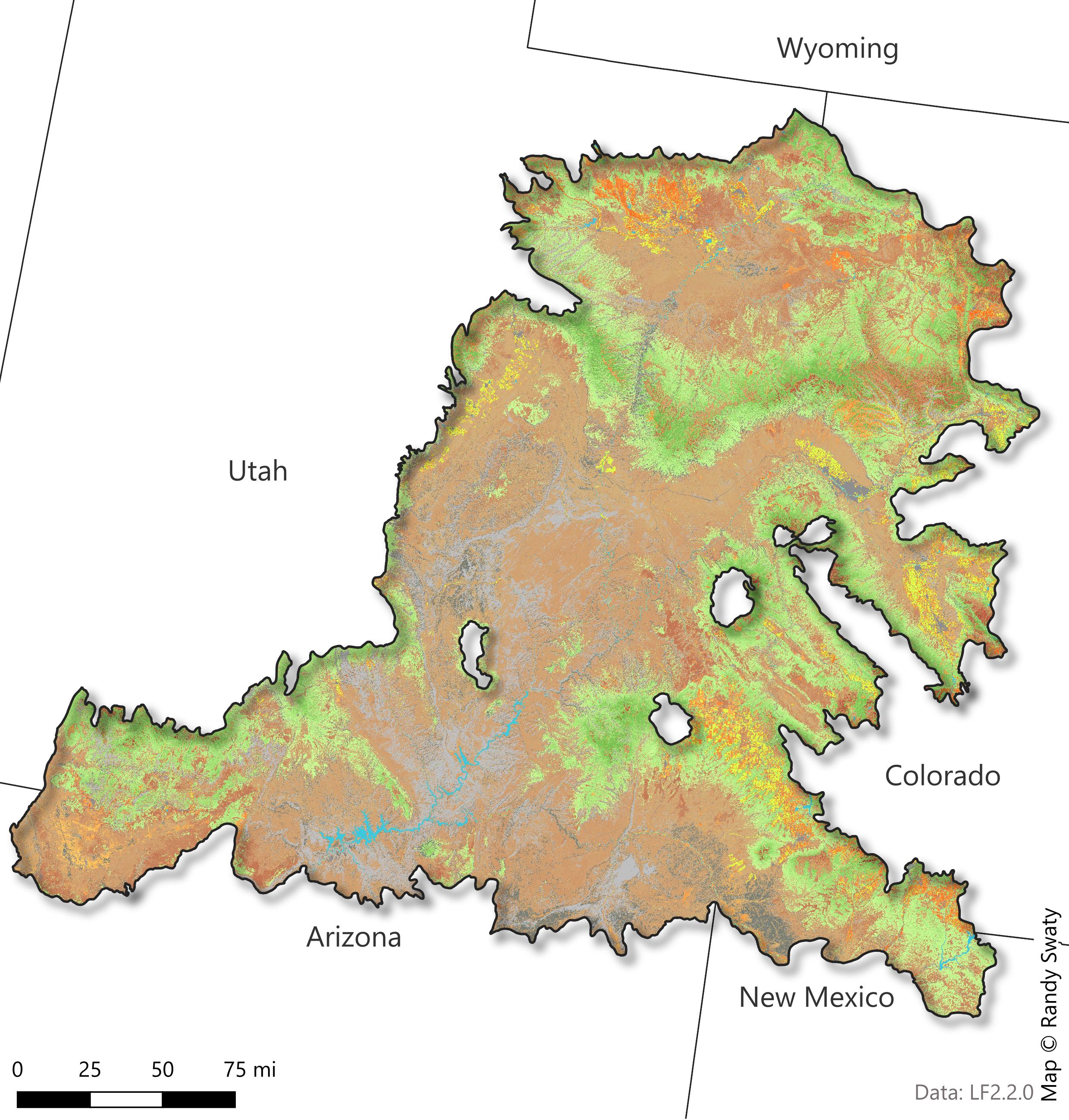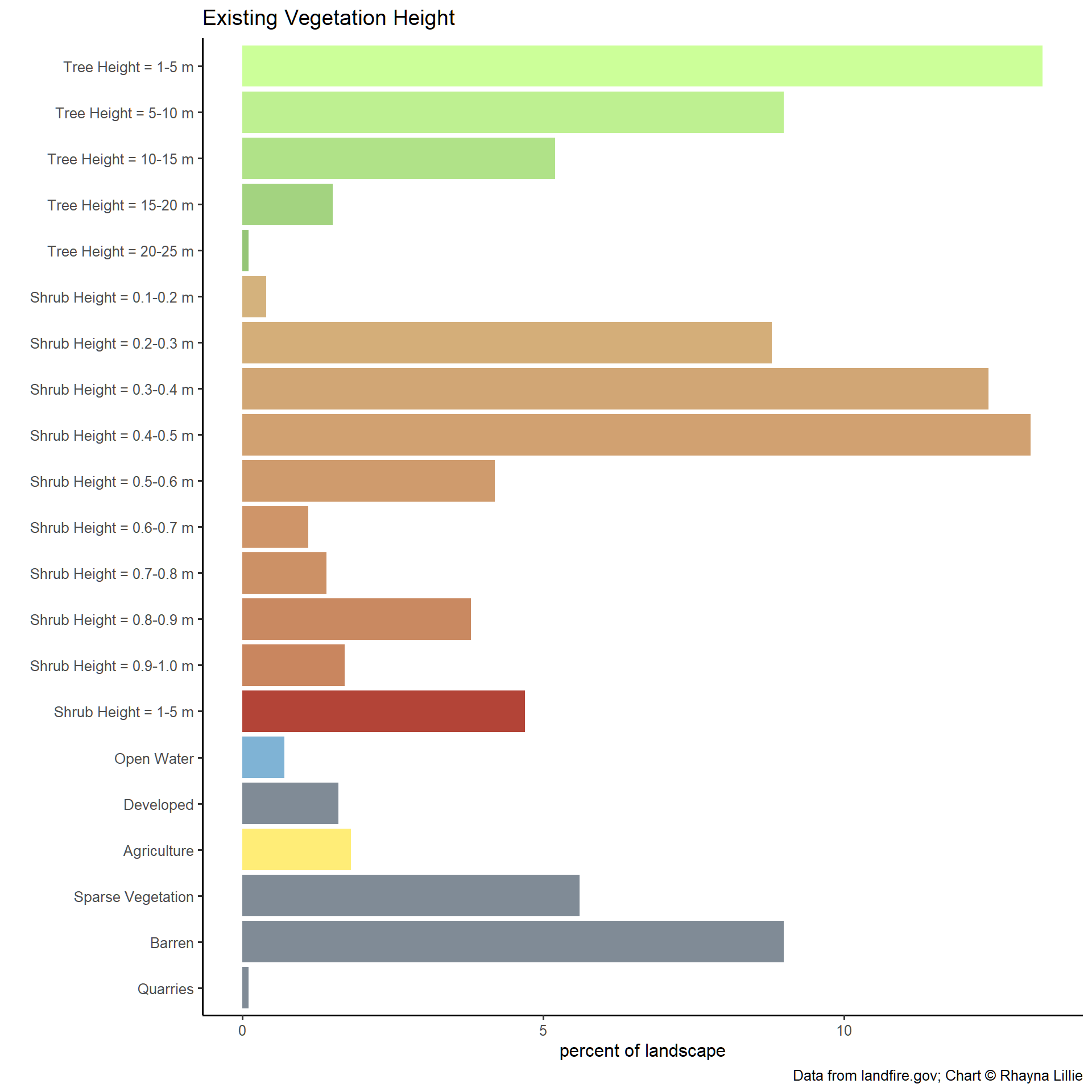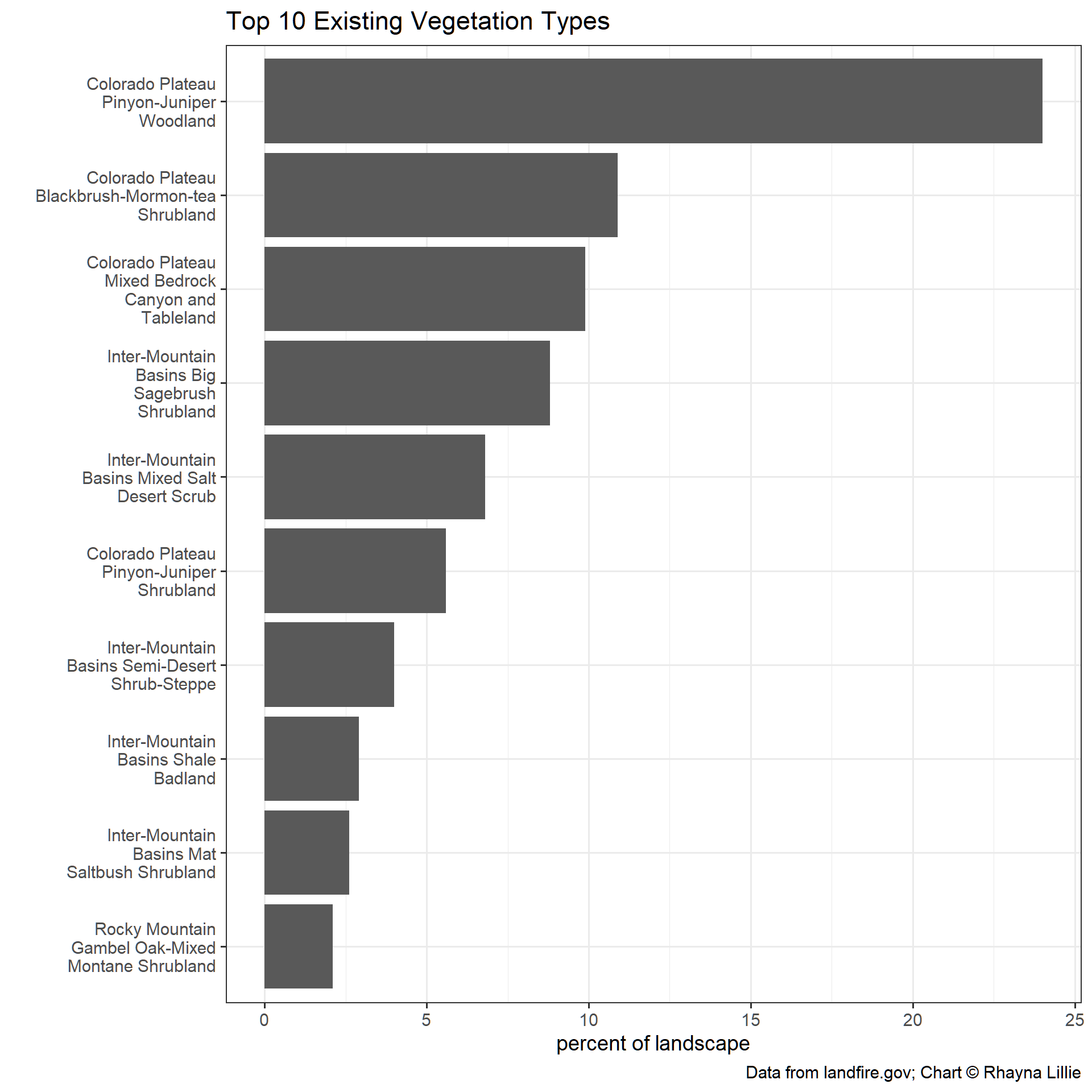
Present: Current Ecosystem Conditions
LANDFIRE’s Existing Vegetation Type, Cover and Height datasets describe vegetation conditions.
- Existing Vegetation Type (EVT) - represents the current distribution of the terrestrial ecological systems classification, developed by NatureServe for the western hemisphere, through 2020
- Existing Vegetation Cover (EVC) - represents the vertically projected percent cover of the live canopy layer for a 30-m cell
- Existing Vegetation Height (EVH) - represents the average height of the dominant vegetation for a 30-m cell
Read more about LANDFIRE Vegetation Products
Summary
- The Colorado Plateau Pinyon-Juniper Woodland is the most dominant ecosystem covering almost 23% of the subregion. The “shrubland” version of this type covers ~7% of the area.
- Shrub are by far the most dominant; relatively low canopy cover dominates as well.
- Trees make up a small amount of the vegetation in this subregion.
Most Prevalent Existing Vegetation Types
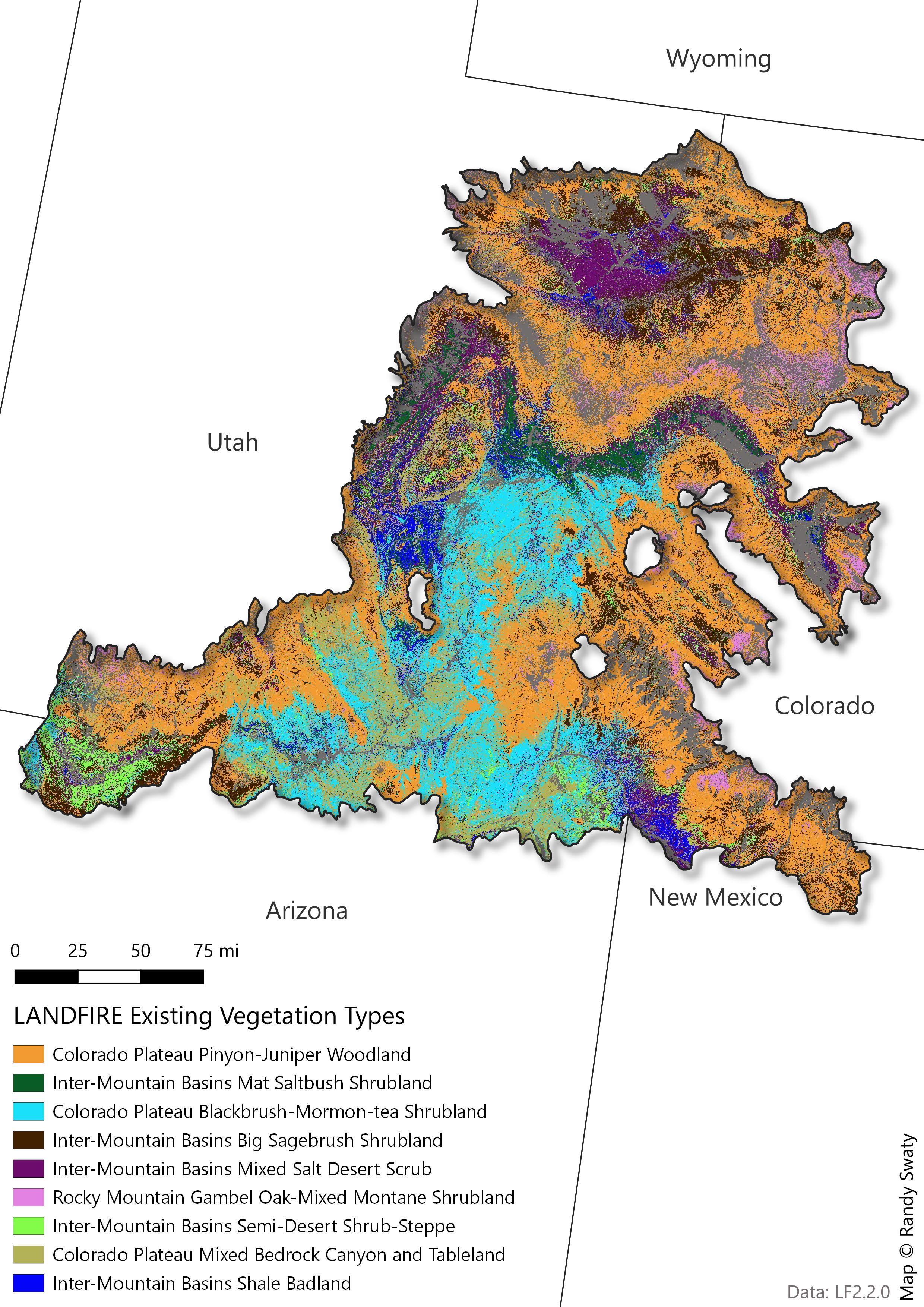
Most Prevalent Existing Vegetation Types
Existing Vegetation Cover
The Existing Vegetation Cover (EVC) map is a visual representation of EVC classifications across the subregion. The chart below the map provides a breakdown of each vegetation cover classification and their relative dominance across the subregion
From this information, we can see that the majority of this subregion is classified as “shrub,” comprising approximately 50% of the vegetation cover.
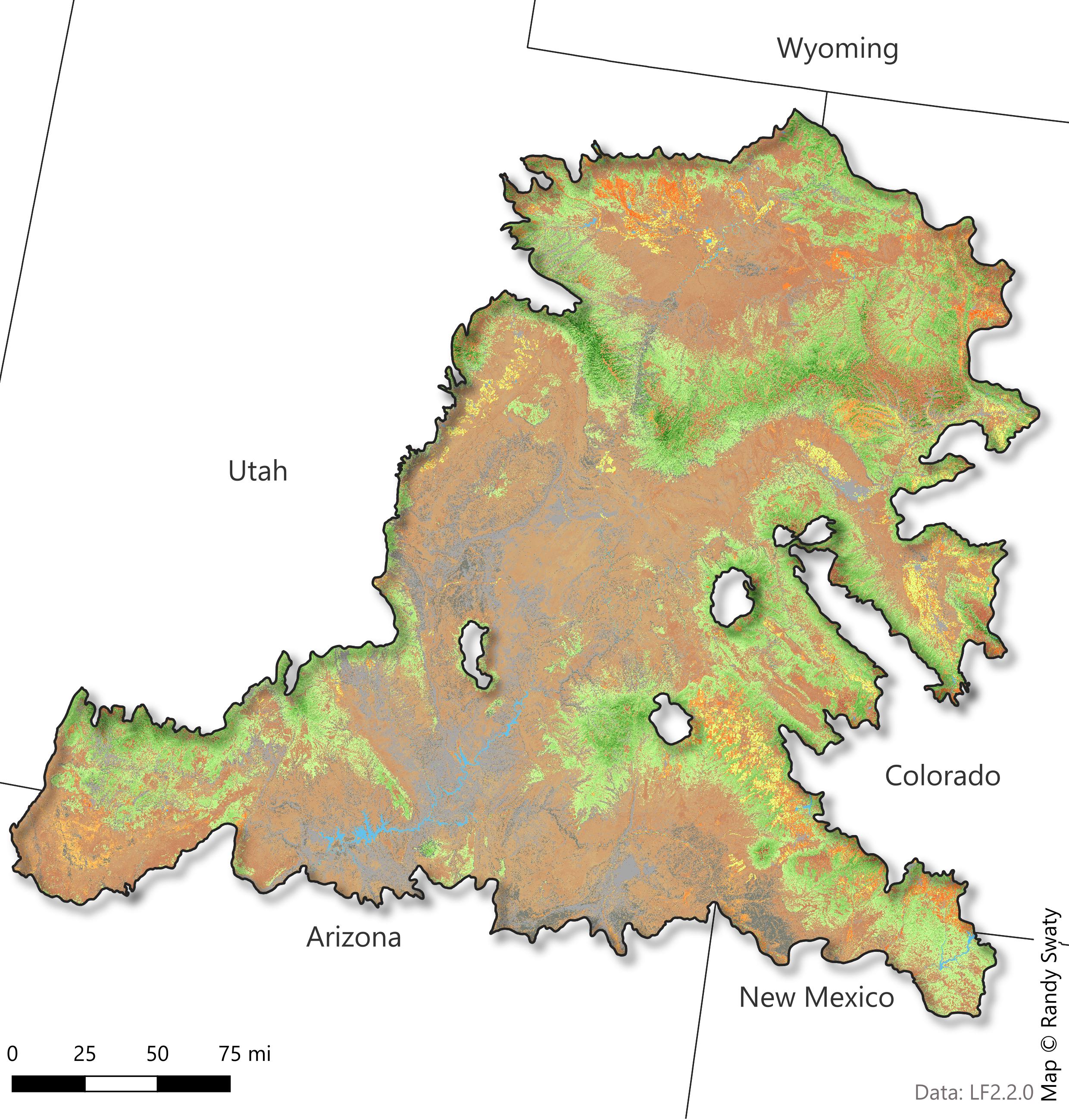
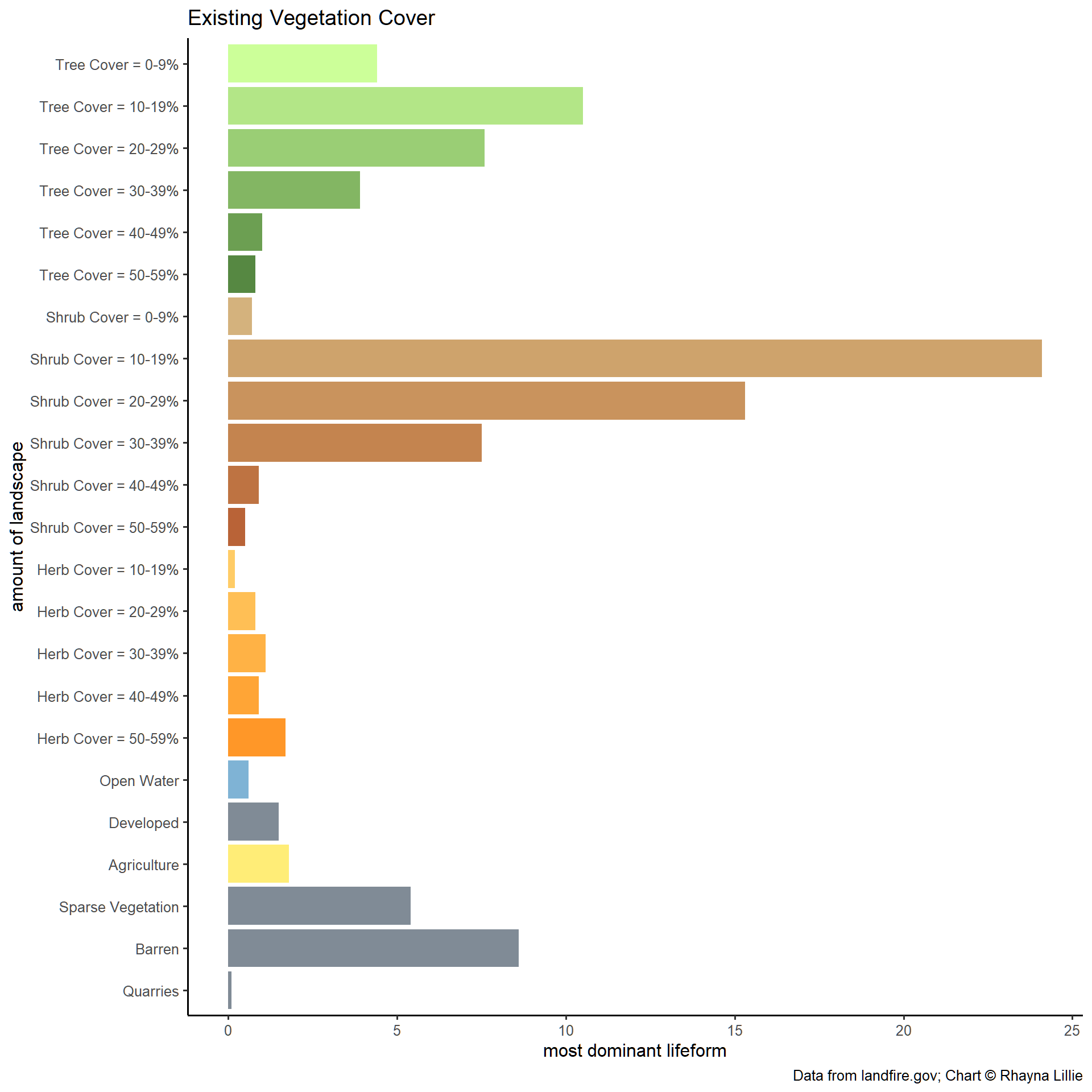
Existing Vegetation Height
The Existing Vegetation Height (EVH) map showcases EVH across the subregion. The chart below the map provides the percentage of the landscape represented by each EVH height.
From these results, most trees are between 1 - 15m tall and most shrubs are between 0.2 - 0.5m tall.
